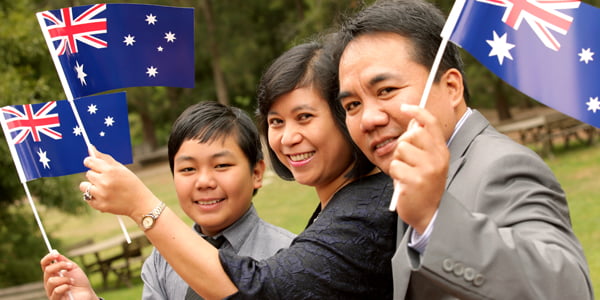In recent years Australia has received quite a bit of criticism for its harsh policies towards asylum seekers and refugees. Last week new information on its treatment of Syrian refugees revealed the lengths Australia is willing to go to remove some of the world’s most vulnerable people from its shores. It also calls into question the ability of the international community to enforce refugee rights, even among Western governments.
Although Australia was a settler colony, the country has never been pro-immigration. This sentiment manifested for decades after independence with the“White Australia Policy” which heavily favored limited European immigration while prohibiting non-Europeans from living, working or gaining citizenship in Australia. Following World War II, the government gradually dismantled the core provisions of the policy, officially removing race and country of origin from immigration criteria in 1973. But while the White Australia Policy is no longer on the books, different government policies have taken its place with the same anti-immigrant sentiment.
Over the last 20 years, the bulk of this ire has been directed towards refugees and asylum seekers, particularly those who arrive by unauthorized boat. Australia introduced mandatory detention for unauthorized arrivals in 1992, removing pre-existing limits on how long someone could be held in favor of the option of indefinite detention if needed. In 2001, following an increase in unauthorized arrivals from Central and South Asia, the government launched the “Pacific Solution” policy that excised many of the island territories around Australia from the country’s official migration zone and established offshore detention centers on Manus Island and Nauru to house potential asylum seekers while they waited for their claims to be evaluated. Detention often lasts months, sometimes even years, as detainees wait for a decision on their asylum application.
The government claims such policies are for national security but it has also been quite vocal in recent years in support of deterrence as an official government policy. This approach ranges from using prolonged detention, whether justified or not, to advertising assurances that no matter the validity of their claim an asylum seeker will not gain resettlement in Australia. The recent treatment and return of several intercepted Sri Lankan asylum seekers – despite Australia’s acknowledgment of widespread state-sponsored torture by the Sri Lankan government and the likelihood that those sent back would face imprisonment – highlights the harshness of this policy and the depths Australia will go to deter any other refugees from trying to come to its shores.
This is all quite shameful but the revelation by The Guardian of interdepartmental emails from the Australian Department of Immigration show just how deep the anti-refugee pathos within the government has gotten. A tiny fraction of the estimated 3 million Syrian refugees in the world have successfully made it to Australian territorial waters but even that is too much for the government to handle. The emails reveal repeated attempts to coerce Syrian refugees to repatriate even though they legitimately fear they will be killed upon their return. One email recounts the options presented to Syrians detained on Manus Island – indefinite detention or return, but never the possibility of resettlement. So far it is understood that all five Syrians on Manus have elected for indefinite detention over repatriation and possible death.
However at least one Syrian detained at Nauru did elect to try to return. In order to facilitate that, Australian officials shared his identity and personal information with the Syrian government to get official travel documents. In this case, it appears the officials had permission from the Syrian to share this information with the Syrian consulate, but based on the emails it also appears officials were preparing to do this even before permission was granted. That impetus – to respect and abide by the laws of a state engaged in massive crimes against humanity against its own people while blatantly flouting commitments under international law – is increasingly the defining characteristic of Australian immigration policy.
Human rights groups and UNHCR have been vocal in their objections to these draconian measures but that is the extent of action by the international community. Last year Australia took the extraordinary step of excising the entire continental mainland from the Australian migration zone, in essence completely removing Australia from its own borders for the purposes of immigration and ostensibly their commitments under the 1951 Refugee Convention. Such measures sound insane because they are; the move is unprecedented under international law. But aside from criticism by UNHCR who stated it still considers the Refugee Convention to be binding on Australia, nothing has happened. Asylum seekers continue to be detained for months offshore or forcibly returned, in full violation of said convention.
Of course there are very real reasons to try and deter refugees from making the dangerous journey by boat to Australia; people smuggling is a brutal and exploitive industry that rarely places any value on the safety of its human cargo. But Australia’s claims that such policies are out of humanitarian concern fail in view of the country’s history and the goals openly stated by politicians. Furthermore, no other feasible alternatives are being provided that actual deter an asylum seeker from attempting to make the trip. Much like the debate over “Fortress Europe” and the US “border crisis”, the issue is not whether refugees should be protected in the abstract but rather whether the refugees risking their lives to gain the protection of these states are the “right kind” of refugees. International law does not allow for that distinction and neither should the national policies of any state.
